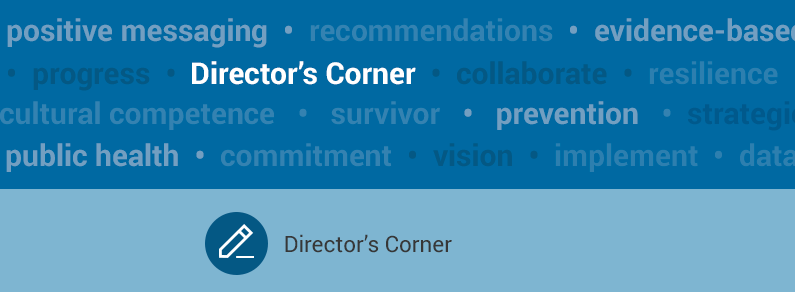Striking a Balance: A Comprehensive Approach to Suicide Data
June 14, 2019

To help inform prevention planning, suicide prevention practitioners have traditionally relied on suicide death data from vital records and CDC’s National Violent Death Reporting System (NVDRS). Data on suicidal ideation and suicide attempts have commonly come from national surveys, like SAMHSA’s National Survey on Drug Use and Health (NSDUH) and CDC’s Youth Risk Behavior Surveillance System (YRBSS). While these data sources are essential tools in our epidemiological toolbox, it can take a year or more until data become available due to the time it takes to collect, organize, clean, and release them. As funders and stakeholders increasingly call for the use of data-driven decision-making in suicide prevention planning, states and communities are seeking access to timely, high-quality data to inform their efforts.
An important source of near real-time data is the CDC National Syndromic Surveillance Program’s BioSense Platform, which rapidly collects and disseminates information from health departments, hospitals, emergency service providers, and public health partners. Originally designed to provide alerts on bioterrorism-related illnesses, the platform has found additional purpose in recent years as a useful system for public health surveillance. One of the tools on the platform is ESSENCE, or the Electronic Surveillance System for Early Notification of Community-Based Epidemics. ESSENCE draws mainly on presenting problem and discharge data from emergency departments and uses an algorithm to categorize them into broad syndromes (e.g., injury) or sub-syndromes (e.g., self-harm). The system then sends an alert to health departments or prevention practitioners when instances of the syndrome or sub-syndrome are higher than expected. For suicide prevention, the system can flag statistically higher-than-expected counts of suicide attempts in a particular geographic area or time period, allowing practitioners to quickly position their efforts.
How can you get access to ESSENCE output data? Local facilities that contribute data to the ESSENCE system are grouped under a single administrative authority, which is typically a state or local health department. A site administrator, located in that administrative authority, is responsible for granting access to system outputs. ESSENCE is not yet nationally representative, so you may need to check with your health department for information about local availability. Your state or local health department can also help you identify an appropriate site administrator to approach for questions about access to output.
In addition to ESSENCE, there are many other good sources of near real-time suicide-related data. For example, information on near real-time self-harm incidents treated in emergency departments and hospitals can be obtained by partnering with state and local health departments and emergency service providers. For instance, in Denton and Tarrant Counties in Texas, regular communication between the medical examiner’s office, first responders, and crisis services allows for more immediate and detailed access to information on suicide deaths. Other states and communities have found creative ways to draw on health, law enforcement, and other resources for access to better and more timely local data.
The availability of near real-time data for suicide prevention efforts is expected to grow, but it’s not without limitations. While traditional data sources, like vital statistics and data collected from national surveys, go through a rigorous cleaning process to promote accuracy, the need for timeliness in near real-time data may translate to less extensive data cleaning. Near real-time data is often gathered from intake and discharge records from emergency departments and hospitals, and these may not be consistently coded. All near real-time data from emergency departments or hospitals rely solely on instances of suicide attempts or self-harm seen in those settings. Since some instances of suicide attempts and self-harm do not receive medical attention, that could lead to undercounting.
Nonetheless, access to near real-time data on suicide deaths and attempts and self-harm can help states and communities in many important ways—from addressing an immediate crisis to longer-term prevention planning. At the same time, good data-driven decision-making relies on the use of multiple measures and data sources to understand the problem. Comprehensive suicide prevention plans should strike a balance. They must be flexible enough to respond to an immediate crisis identified by near real-time data, but steady in directing prevention efforts to at-risk populations identified by traditional data sources. SPRC’s recently updated and redesigned online course can help you think critically about the strengths and limitations of various data sources. With this knowledge, prevention practitioners can use a variety of data sources for a comprehensive, informed approach to prevention.
